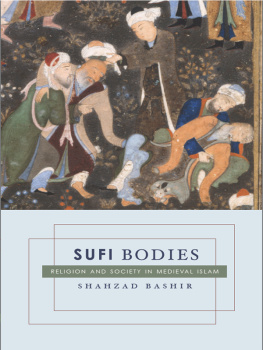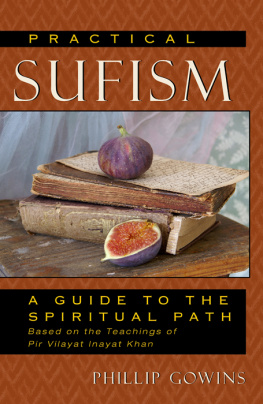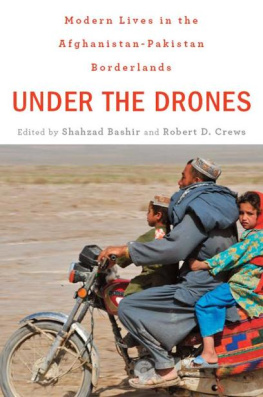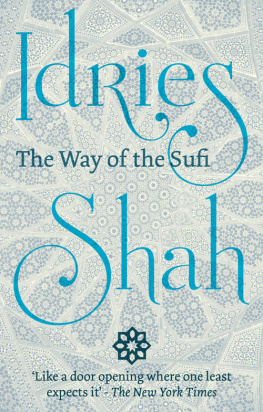SUFI BODIES
COLUMBIA UNIVERSITY PRESS
NEW YORK
COLUMBIA UNIVERSITY PRESS
Publishers Since 1893
New York Chichester, West Sussex
cup.columbia.edu
Copyright 2011 Columbia University Press
All rights reserved
E-ISBN 978-0-231-51760-7
Library of Congress Cataloging-in-Publication Data
Bashir, Shahzad, 1968
Sufi bodies : religion and society in medieval islam / Shahzad Bashir.
p. cm.
Includes bibliographical references and index.
ISBN 978-0-231-14490-2 (cloth: alk. paper) ISBN 978-0-231-51760-7 (e-book)
1. Sufism. 2. SufismDoctrines. I. Title.
BP189.2.B366 2011
297.409'02dc22
2011000817
A Columbia University Press E-book.
CUP would be pleased to hear about your reading experience with this e-book at .
References to Internet Web sites (URLs) were accurate at the time of writing.
Neither the author nor Columbia University Press is responsible for Web sites
that may have expired or changed since the book was prepared.
Design by Shaina Andrews
 For making life beautiful and full of love
For making life beautiful and full of loveCONTENTS
IT IS MY pleasure to acknowledge the institutional and personal support I have received while writing this book. A Charles A. Ryskamp Research Fellowship from the American Council of Learned Societies and a Faculty Fellowship from the National Endowment for the Humanities provided the opportunity to devote myself fully to this project. Small grants from American Academy of Religion and the Associated Colleges of the Midwest enabled me to acquire some necessary materials. At Stanford University, funds from the School of Humanities and Sciences and the department of Religious Studies facilitated the books production. I am thankful to the libraries of the University of Chicago and the Research Institute for Inner Asian Studies (RIFIAS) at Indiana University for allowing me access to their manuscript microfilm collections.
I am very grateful to the two anonymous reviewers who initially read a partial manuscript for the Press. Subsequently, the great care with which Jamal Elias and Kathryn Babayan commented on the whole manuscript enabled me to clarify significant points and think carefully about how the material should be presented. I have been fortunate to call the congenial environments of Carleton College and Stanford University my academic homes during the period I have worked on this book. At Carleton, the advice, support, and friendship of Adeeb Khalid, Michael McNally, and Lori Pearson were particularly valuable for formulating the project and thinking widely about representing religious history. I would also like to thank Roger Jackson, Michael Kidd, Victoria Morse, Bill North, Cathy Yandell, and Serena Zabin for providing helpful feedback. At Stanford, conversations with Mira Balberg, Jessica Chen, Charlotte Fonrobert, Bob Gregg, Mohsen Goudarzi, Ariela Marcus-Sells, and Will Sherman were important for clarifying what I wished to say in the book. The friendship of Aishwary Kumar and Parna Sengupta is such that any time spent with them is a great pleasure as well as being a stimulus for thought.
While presenting ideas on this subject at various formal and informal occasions, I have benefited from the comments of Janet Afary, the late Aditya Behl, Sheila Canby, zgen Felek, Gottfried Hagen, Farooq Hamid, Ahmet Karamustafa, Seyfi Kenan, Bruce Lawrence, Paul Losensky, Ann Matter, Azfar Moin, Sholeh Quinn, and Kishwar Rizvi. It is not a hyperbole to say it would have been impossible for me to write this book without the benefit of Devin DeWeeses many pioneering studies on Sufism in Central Asia and Iran. In addition to his published work, I am deeply grateful to him for his friendship and his generosity of mind. Thanks are also due to Wendy Lochner and Susan Pensak at Columbia University Press for their endorsement of the books content and for taking care of editorial details.
It is customary to mention the support of family members last, even though they are by far the only people whose love and support is an absolute necessity to make any work possible. I am grateful to my mother and siblings for their love shown in countless ways and for holding my work in esteem. To my regret, my father has not lived long enough to get a satisfactory answer to the question about when the next book would be done. To Zakriya, a quintillion thanks for filling our lives with new passions and for keeping us dreaming about the future. And to Nancy, this book is but a small return for the love I feel fortunate to receive every moment of my life.
I HAVE OMITTED diacritical marks in the text and notes of this book in order to facilitate the reading of those unfamiliar with them. For readers who would like to see orthographic details, the chronology and bibliography contain full transliteration, according to a system modified slightly from the one used for Persian by the International Journal of Middle East Studies.
BSOAS | Bulletin of the School of Oriental and African Studies |
EI2 | Encyclopedia of Islam, 2d edition |
EIr | Encyclopdia Iranica |
EQ | Encyclopedia of the Quran |
EWIC | Encyclopedia of Women in Islamic Cultures |
FIZ | Farhang-i Iran Zamin |
HR | History of Religions |
IJMES | International Journal of Middle East Studies |
JAOS | Journal of the American Oriental Society |
JIS | Journal of Islamic Studies |
JRAS | Journal of the Royal Asiatic Society |
MW | Muslim World |
RSO | Rivista degli Studi Orientali |
SI | Studia Islamica |
ZDMG | Zeitschrift der Deutschen Morgenlndischen Gesellschaft |
PERSIANATE SUFI MASTERS MENTIONED IN THE TEXT ARRANGED BY COMMON ERA YEAR OF DEATH
123233 | Jaml ad-Dn Sv |
1301 | Ibrhm Zhid Gln |
1316/1321 | Al Azzn Rmtan |
1334 | af ad-Dn Ardabl |
1344 | Amn ad-Dn Muammad Balyn |
1354 | Muammad Bb Samms |
137071 | Sayyid Amr Kull |
1385 | Al Hamadn |
1389 | Bah ad-Dn Naqshband |
1389 | Zayn ad-Dn Tybd |
139192 | adr ad-Dn Ardabl |
1400 | Al ad-Dn Ar |
14001401 | Amr Umar b. Amr Kull |
1406 | Amr amza b. Amr Kull |
1420 | Khwja Muammad Prs |
1425 (circa) | Kaln Khtn b. Amr amza |












